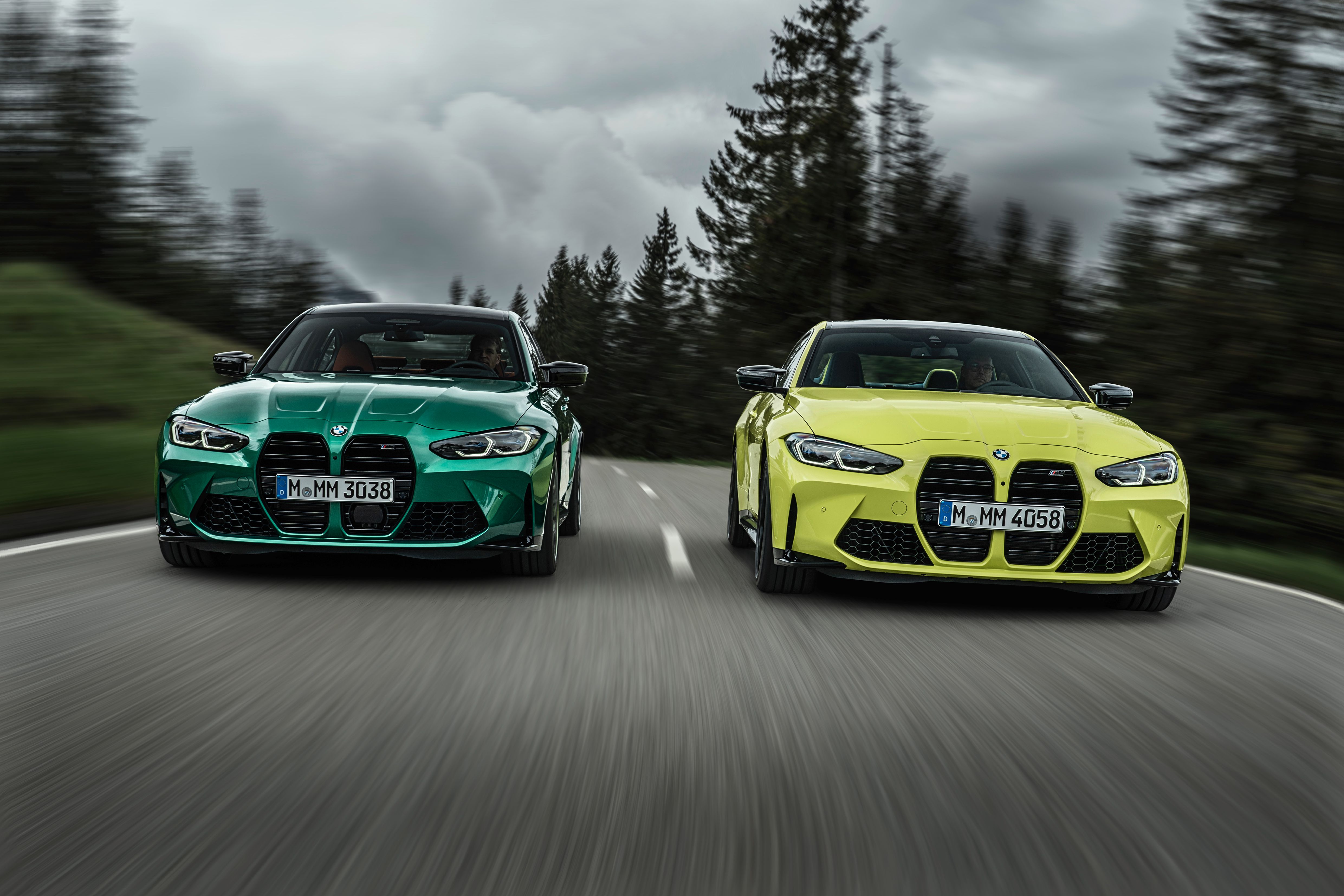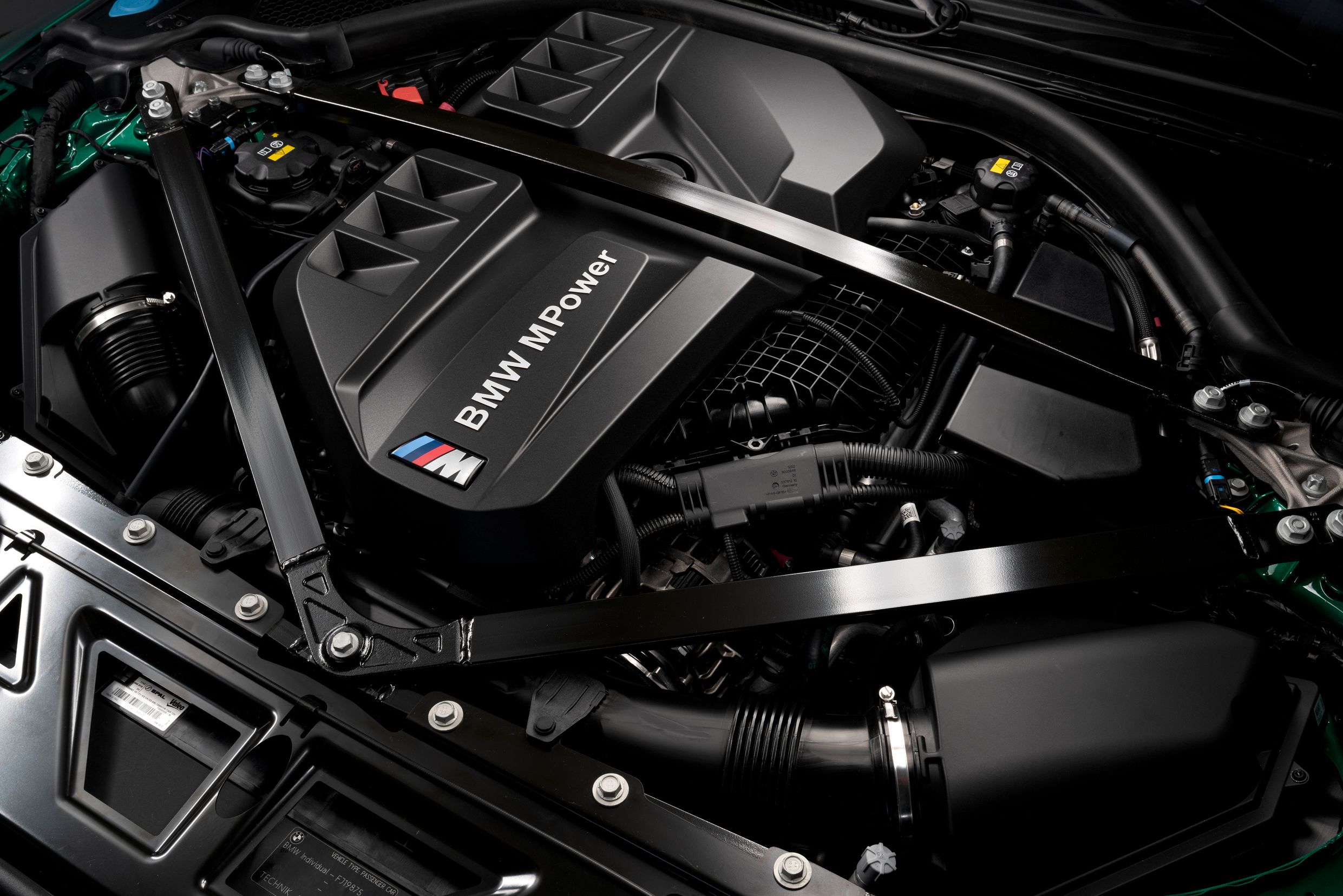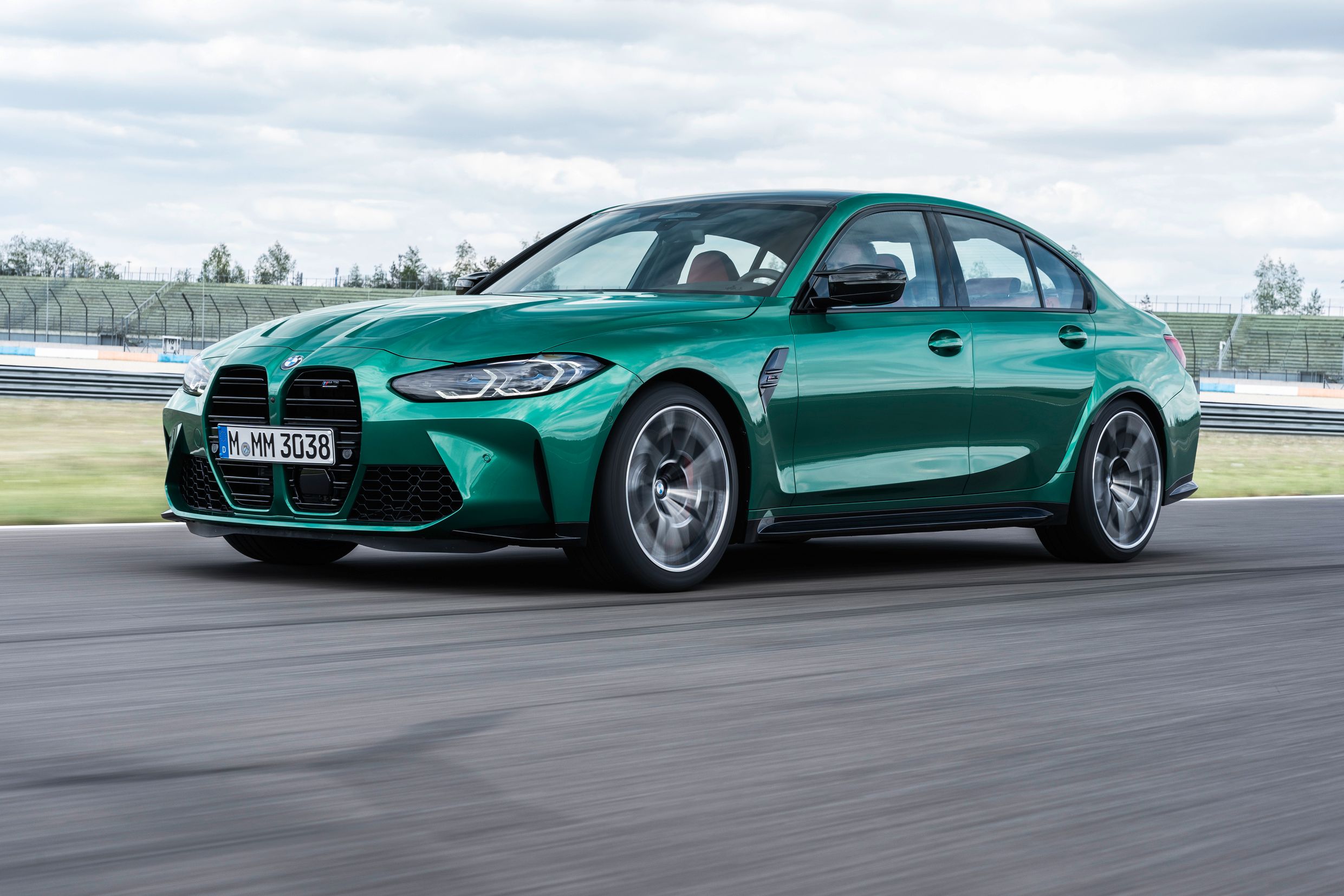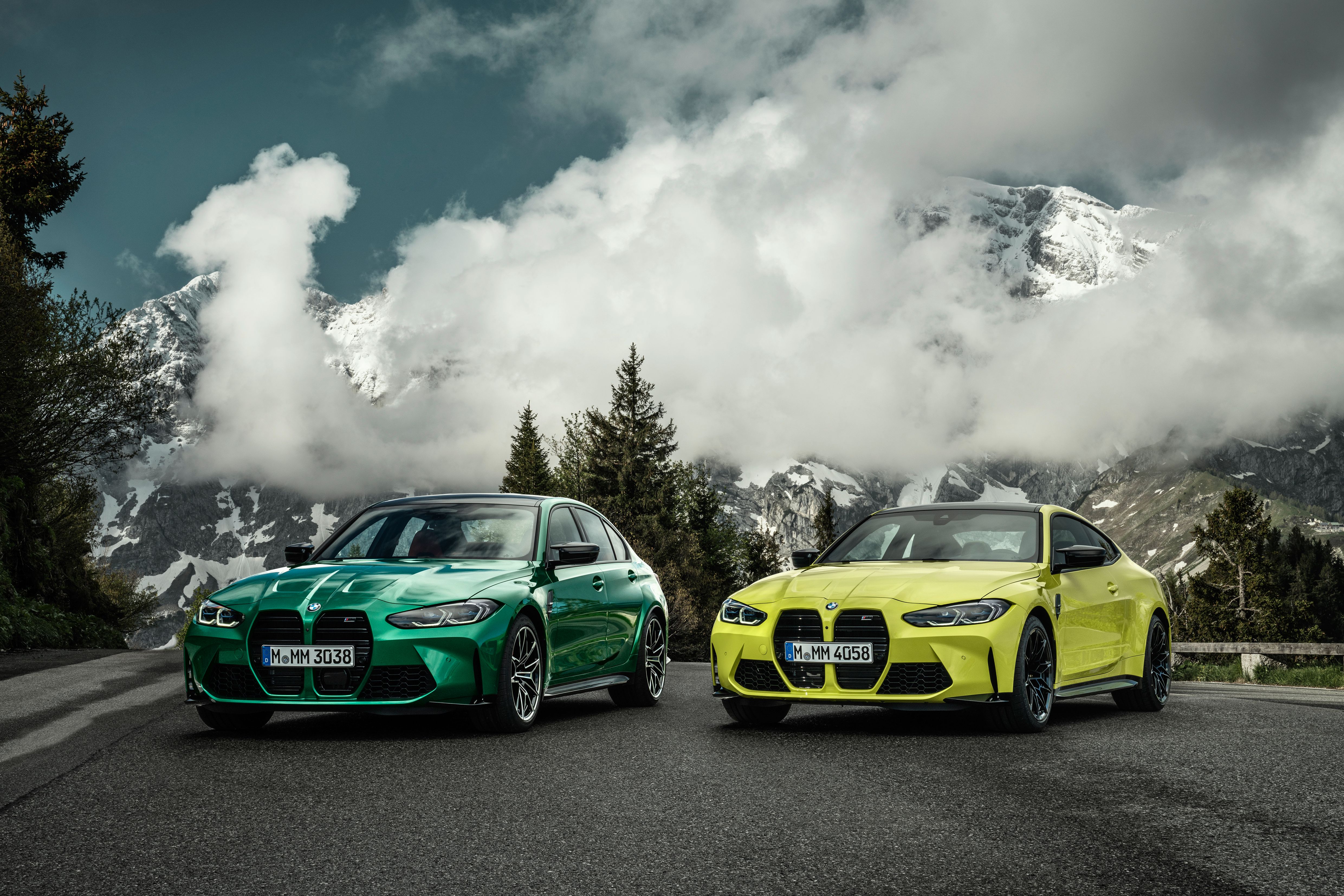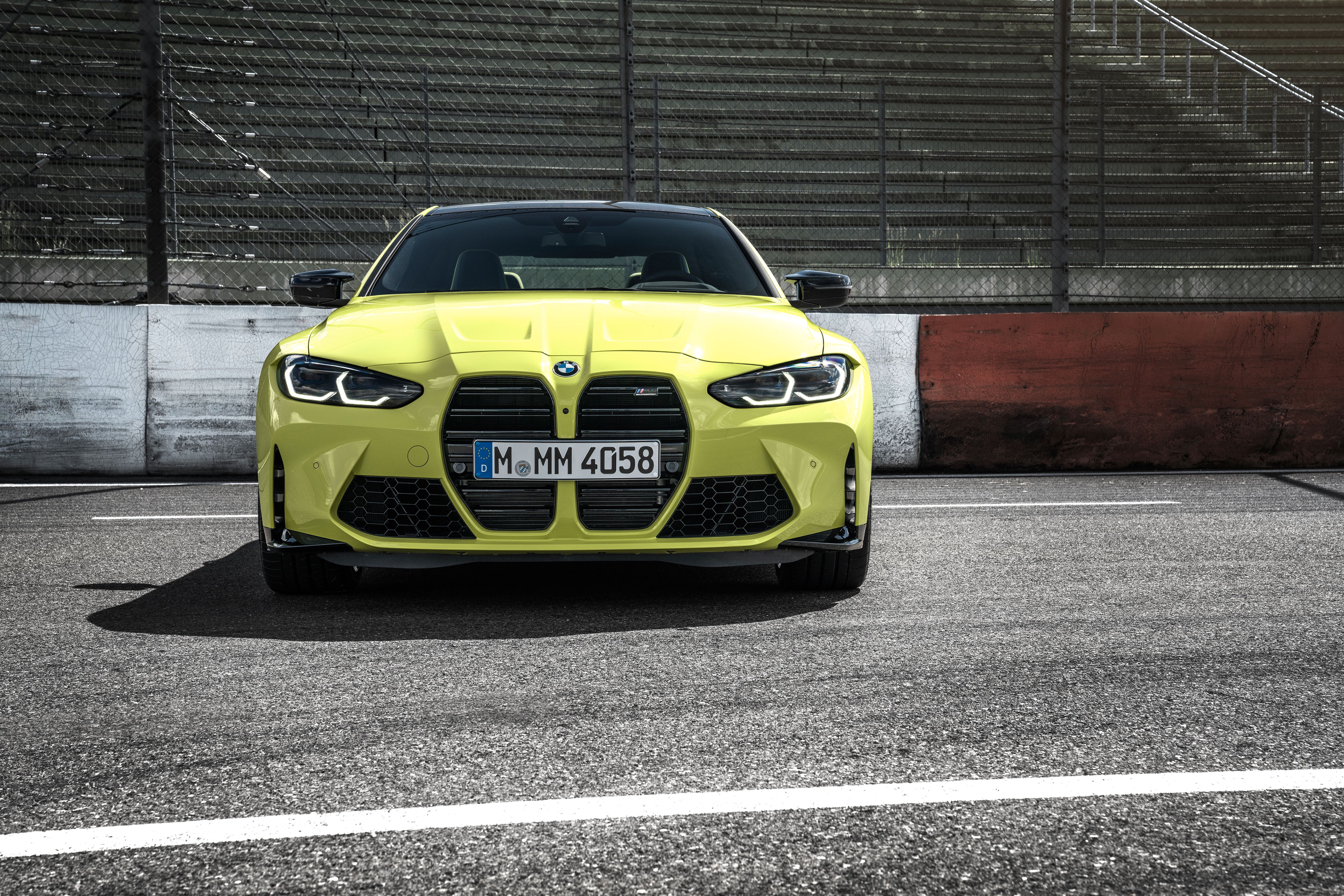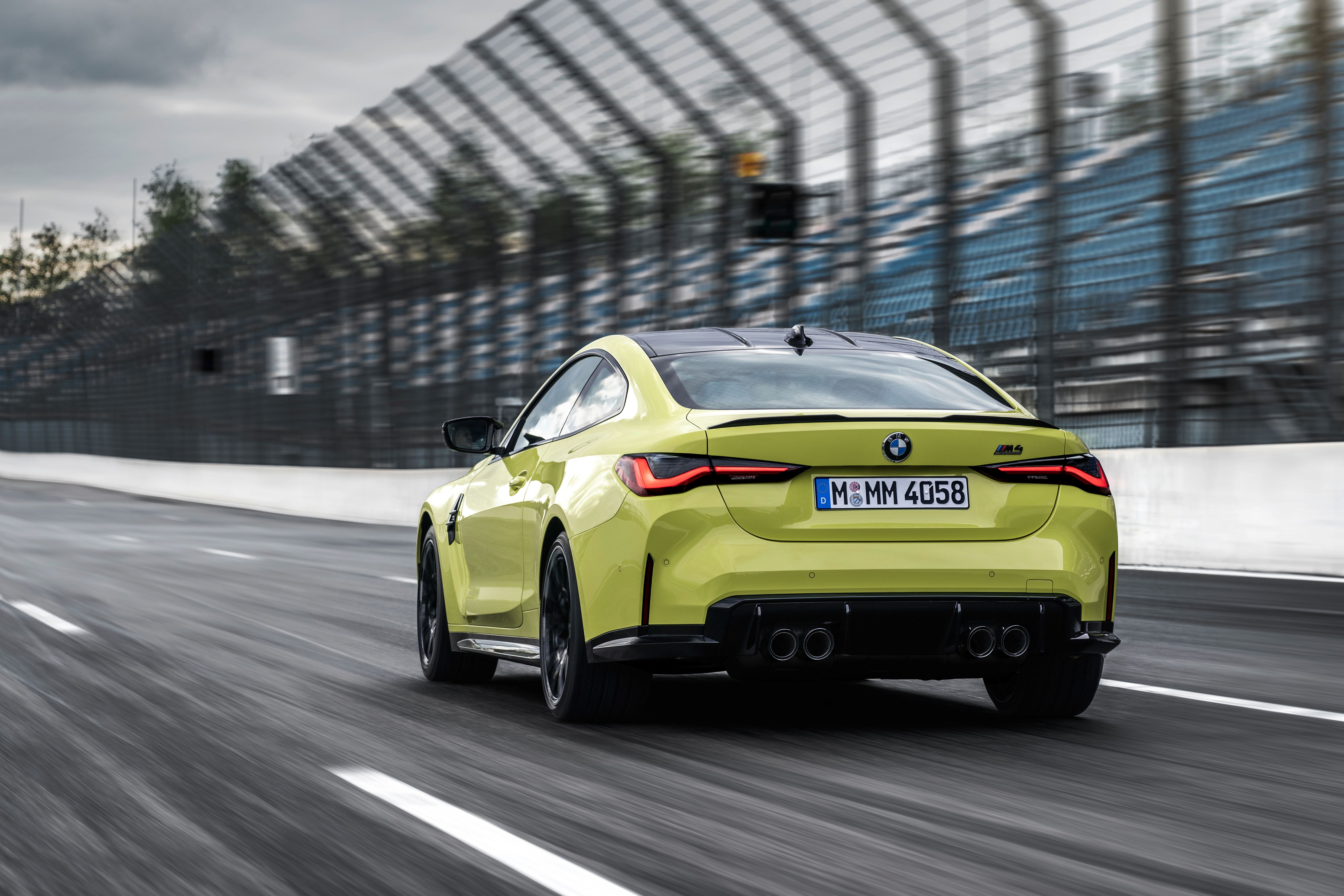The much-awaited 2021 BMW M3 and 2021 BMW M4 are out of the bag and aimed directly at the Mercedes-AMG C63 sedan and coupe. Affalterbach’s heavy hitters offer ridiculous levels of performance thanks to a beautifully engineered V-8, but the Bavarians look ready to hit back with a souped-up inline-six mill, just like the previous generation, only with more more yet similar performance.
Yes, the new M3 and M4 are more powerful, but not quicker or faster
It was well known that the new M3 and M4 would get the BMW X3 M’s 3.0-liter inline-six powerplant. The information became official as the two were officially unveiled by BMW and as per the spec sheet, both the coupe and the sedan carry 473 horsepower at 6250 rpm and 405 pound-feet of torque fully unlocked between 2650 rpm and 6130 rpm. In Competition guise, power takes a hike to 503 horses and torque goes up to 479 pound-feet.
For the sake of comparison, the soon-to-be-replaced BMW M3 and M4 had a 3.0-liter straight-six powerplant good for 425 horsepower at 5500 rpm and 406 pound-feet of twist unleashed at 1850 rpm. A Competition trim for both of them was also offered along the way, rising the power output to 444 horsepower; torque stayed the same.
However, if we look at performance figures, the difference between the old and new M3 and M4 isn’t that abrupt at all. The previous generation could zap from 0 to 60 mph in 3.9 seconds (with the automatic gearbox of the dual-clutch variety) while the new generation can dispatch the same interval in four seconds flat (also with an automatic gearbox). Top speed for the previous M3/M4 is 155 mph, identical to what the new M cars can offer.
So, if performance is similar, what changes other than the interior/exterior design?
Our guess: the way the new M3 and M4 drive and feel, especially when pushed hard, will be seriously augmented. And the reasons for that lies in BMW’s novel-size press release.
For starters, the M3 and M4 were already quick as lightning off the line and a further improvement of half a second or even a full second would arguably have been imperceptible for most drivers. With the new Ms, BMW decided to focus more on drive feeling and it says so in the press blurb: “the significant advances made over their predecessors are the product of a typically M development and tuning process conducted in part alongside testing for the new BMW M4 GT3 racing car. Further common ground between the new BMW M cars is the spectrum of emotions sparked by their powertrain and chassis, visually expressive design and new, M-specific control/operation system.”
As you know, the previous M3 and M4 ditched the naturally-aspirated V-8 in favour of turbocharging. Just look at the power and torque figures. Whereas in the previous cars torque came quite early to the party (1850 rpm), it now arrives on a stretched band that starts at 2650 rpm and goes all the way north to 6130 rpm.
Perhaps this is BMW’s attempt to mimic the linear and easy-to-predict acceleration that’s typical of a naturally-aspirated mill, something that’s also backed up by the fact that in the new models, full power doesn’t arrive until the rpm needle hits 6250 rpm, 750 rpm higher than in the previous M3 and M4.
Final word
We’re yet to take the new 2021 BMW M3 and 2021 BMW M4 for a spin, but from what we can tell by looking at the official numbers provided by BMW, the company is looking to double down on driving pleasure (something that’s already trumpeted by its own motto) instead of straight-line acceleration and top speed.
Sure, the days of the naturally-aspirated V-8 are gone and it’s hard to believe that they’re coming back, yet by tweaking the revving ability of its 3.0-liter inline-six mill, BMW hopes to lure in customers with a naturally-aspirated engine’s behavior extracted from a turbocharged unit, while also keeping in line with ‘cruel’ emissions regulations.
Let’s not forget that because of the same emission regulations, the previous M3 was discontinued in 2018 while the M4 is still kept to this day as part of Munich’s lineup in the U.S. This must have been a tough decision for BMW’s top brass, but the sedan was eventually (and logically) sacrificed since this body shape isn’t that appealing to customers these days.

